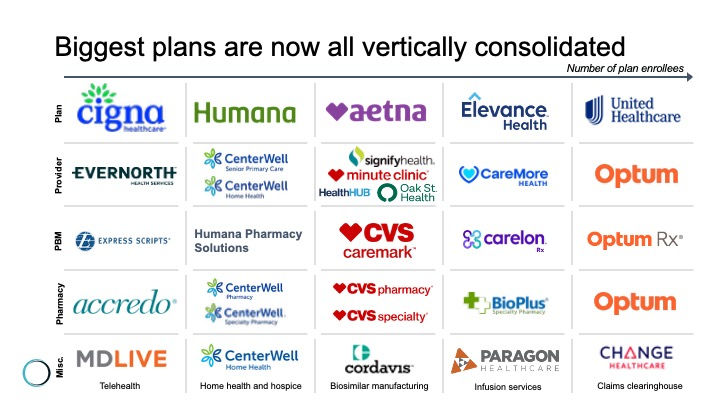How to decipher (and re-decipher) the world of healthcare strategy
- Christopher Kerns

- Jan 9, 2023
- 3 min read
Updated: Jul 19, 2024
Why healthcare is the best market for 'state of the industry' research.
The laudable goal of keeping up with healthcare is best understood as a collision between an unstoppable force and an immovable object.
The unstoppable force is the personal drive of the learners. All participants of the healthcare world—executives, board members, clinicians, patients, and everyone in between—want to know what they are talking about, ask the right questions, spot opportunities, avoid danger, and make sound investments.
The “immovable” object is the healthcare industry itself. It fights summarization. It’s packed with technical, economic, and regulatory complexity; a wide array of subtopics, sub-segments, and specialties; and a thick fog bank of purposeful and self-interested value-chain obscurity. As it grows (in both absolute terms and as a percentage of U.S. GDP), it only gets more complex, resisting learners’ efforts to keep up with it. Innovation and change are constant, with new treatments coming online every year. And it’s that ever-present change that feeds the complexity, paradoxically making the industry seem recalcitrant and immobile.
How to move an immovable object.
Viewed in this metaphor—a sort of balance of power between entrenched interests—it stands to reason that rivals rarely seem to make apparent headway against the other. But in the decades this team has spent researching strategic developments, we have learned to believe in the learners. Especially if they are willing to follow some of the advice we have to offer, based on our collective knowledge and experience, about discerning the most consequential developments. For example:
Put aside rhetoric about how “the healthcare industry is on an unsustainable path." Not only because people have been saying “this can’t go on forever” for the better part of 25 years, but also because nothing is sustainable forever. Accept that healthcare has baked-in, structural cost, access, and outcomes problems—and focus on where/how they are registering most sharply right now and what, exactly, powerful actors are likely to do about it.
Filter out the word ‘disruption’—a word too often bandied about, and often incorrectly used as a synonym for innovation or pressure from non-traditional rivals. Instead, look for players and trends that are demonstrably shaking up specific sectors of the industry, with measurable impact on cost, quality, access, and competition. Accept that no one disrupts ALL of healthcare (except maybe Congress, and we all know how resistant that body is to making major changes to the industry). Identify those bold enough (and resourced enough) to remake the market; consider the opposing forces of entrenched interest; and place bets about whether the disruptors can be stopped in their tracks or forced to the margins. Also, assume every major innovation has unintended consequences and look for those ripples. The big ones represent the next set of problems and opportunities.
Heavily discount what politicians and business leaders say, and observe/predict what they actually do.
Respect the complexity of each and every healthcare sector. Don’t assume that the dynamics of one are common to all. The economics of primary care are quite different from the specialty world. Fee-for-service and value-based care have some common and some distinct economic keys. Not-for-profit economics create incentives that, on the surface, lead to decisions that seem alien and even self-destructive to the for-profit observer. And the businesses of pharmacy and supply chain are planets unto themselves.
Demand quality information. Explain why information is needed. Stop speakers when they’re accidentally losing large swaths of the audience. Ask the questions, express the confusion, and open the door to productive conversations.
And speaking of quality information...
They say quality is in the eye of the beholder. But for our part, as we launch into a new year—and a new business!—we would like to share with you what we think makes for excellent strategic research on the healthcare industry, a passion of this group for a very long time now.
We’ve honed our craft into a research and insight process with four defining characteristics: independent, objective, holistic, and curated for what any given audience wants and needs to know.

Why do we do this? Honestly, for the sheer joy of the work. There are three traits that all Union staffers share:
Love for learning
Comfort with ambiguity when presented with a tough research question, and an understanding that the answer may take you far from where you started
The desire and willingness to communicate those insights to any audience that has an interest in learning what we’ve learned.
And that’s why we founded Union Healthcare Insight. If you’ve read this far and want to learn more, follow us on LinkedIn, Instagram, Twitter, etc., or email us at info@unionhealthcareinsight.com.
This is going to be fun.
Christopher Kerns
Amanda Berra
Yulan Egan





Comments